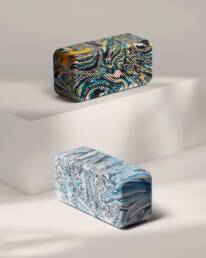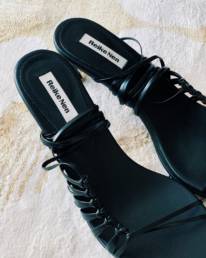STARTING SOMEWHERE
So you want to start an online clothing business? Congratulations! Becoming a fashion retailer is never easy. But the founders of H&M, GAP, Gucci, and Zara were all in your shoes at one time.
First, the bad news: 20 percent of new businesses fail in their first two years of opening. But many of these didn’t know how to run a business in the first place. You’re different. The five things on this list will increase your chances of success.
N°1: Product Procurement
Perhaps the most important step in setting up a new online clothes business. Product procurement involves procuring (obtaining) goods to sell in your online store. These goods might include clothes, shoes, and fashion accessories.
During product procurement, you need to find suppliers and distributors who provide you with these goods. This is the difficult part. Depending on the type of clothes you want to sell, find suppliers and distributors who sell high-quality goods that your customers will love.
- Start by contacting suppliers and asking for product samples.
- Negotiate pricing with suppliers.
- Due diligence: Make sure suppliers have registered their details with the appropriate authorities.
- Reach out to other clothes retailers and ask for testimonials about suppliers.
- Tip: Ask for discounts as a new business. (This could lower your set-up costs considerably.)
Every million-dollar business once started as a zero-dollar business.
N°2: Branding
The apparel market in the United States is competitive: Online clothes retailers generated $102.5 billion in 2019, and experts predict this number will rise to $153.6 billion in 2024. With so much competition, you need to stand out from the crowd.
This is where branding comes in. It lets customers identify your new clothing business. Branding is much more than a logo on a website. Create a comprehensive branding strategy that is present on every platform and medium you use, from social media channels to marketing materials.
Over time, customers will identify your business through its branding and trust your brand. (Fifty-nine percent of people purchase new products from trusted retailers.)
- Choose branding that reflects the values of your new business.
- Make sure your branding is consistent and appears across all platforms/mediums, even emails.
- Create an “About Us” page on your website where you explain the story behind your branding.
N°3: Customers and Competition
This board is really about identifying the meaning behind your project and explaining it through semantic means. Highly relevant to marketing, Visual Communication is one of the key vehicles for developing content and communicating with your audience. It should approach them on an emotional, thought-provoking level that ultimately leads them to care about your brand.
The meaning should be genuine and authentic, but there is a lot of flexibility. It can be something very simple or more abstract. The goal isn’t necessarily to make it clear, but to make it relevant. The ability to uniquely communicate your brand through visual assets will ultimately make it stand out from an over-saturated pack.
Product procurement is the first step in setting up your new online business.
N°4: Web Design and Hosting
Your website will be the first thing customers notice about your clothes business, so it needs to be perfect. Ninety-four percent of customers’ first impressions relate to the design of a website, and 75 percent of website credibility comes from its design. A good website does more than just list products; it reflects the retailer and its values. Think up some creative design ideas or consult with a web design agency in your area.
Don’t forget about mobile! Optimizing your website for mobile users can have a significant impact on sales. (Seventy-four percent of customers are more likely to return to a “mobile-friendly” website.)
Online retailers include the following information on their website:
- Product specifications
- Product descriptions
- Prices
- Shipping information
- Returns information
- Contact information
Online clothes retailers have additional responsibilities. You might want to include the following:
- Measurements
- Size charts
- Photos
- Videos (This has become a popular trend on fashion websites in recent years.)
- Information about materials
- Similar products
You also need to invest in a good website host. A hosting provider stores all your website files on a web server so customers can access your pages. Without a good web host, your website might not function correctly, and this can discourage customers from coming back in the future.
Choose branding that reflects the values of your new business.
N°5: Marketing
At this point, you have procured products, invested in branding, identified your customer base, researched your competition, and created a website. But you’re not ready yet. Marketing your online clothes store is an important step. After all, how will people buy your products if they don’t know you exist?
Marketing involves many different facets:
- Email (Tip: Despite newer technologies, email still has a higher return-on-investment for e-commerce retailers than other marketing methods.)
- Social media (Twitter, Facebook, Instagram, etc.)
- Search engine optimization (A process where you optimize your website, so it appears higher on search engines like Google and Bing. A huge 93 percent of online experiences start with a search engine.)
- Paid ads (Digital ads that appear on other websites and search engines.)
- Traditional marketing (TV, radio, newspaper advertising, etc.)
The most successful clothes retailers use a combination of the above and create an omnichannel marketing strategy (a marketing strategy that appears on multiple channels like email and social media.) Omnichannel marketing is a great way to increase your visibility and promote products and services to your demographic.
Marketing requires an outlay at first, but it could pay for itself over time. With the right marketing strategy, you can engage with customers, promote your new business, and increase traffic to your online store.
Final Thoughts
Starting a new online clothes business can be a challenge, but there’s never been a better time to do it. As brick-and-mortar store sales decline, more people are buying clothes, shoes, and fashion accessories online. Follow the tips above and become a more successful online retailer.
Show some love: Photos: Anomaly, Markus Spiske
Coralie Myrne
Coralie Myrne is a seasoned journalist with a keen eye for sustainable fashion trends, serving as the voice of conscience for "EcoStyle Insights." Combining her love for writing with a passion for environmental advocacy, she travels the world uncovering the stories behind eco-friendly designs and the innovators shaping the industry. With a commitment to authenticity and a dedication to promoting conscious consumerism, Coralie empowers readers to make informed choices while looking effortlessly stylish.










